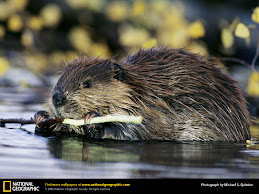 It is breathtakingly beautiful, but like so much that is beautiful, sadly ephemeral. And I had the good fortune to bump into one yesterday.
It is breathtakingly beautiful, but like so much that is beautiful, sadly ephemeral. And I had the good fortune to bump into one yesterday.At the Lower Merion Conservancy’s cottage office in Rolling Hill Park, a cecropia moth was perched on our foundation wall, a large cinnamon blob fresh out of its cocoon. Since its wings were only starting to unfold, blood pumping through its veins to enlarge them, the moth was misshapen, not yet its regal, winged self.
When done, the creature will be stunning, five inches long, all purples and browns with large quarter moons gracing each wing. The males sport large plumes of antennae, the better to smell the female’s pheromones—which they can detect miles away. And make a beeline for.
After mating, the eggs are laid in trees like maples, birches and cherries, host plants for the caterpillar, which take the rest of summer and autumn to grow—and is itself a creature of beauty, all spiky and neon colored. The caterpillars form cocoons in the fall, large silken pita pockets, hibernating all winter and into the spring.
 Until early summer. Now. When this one emerged.
Until early summer. Now. When this one emerged.With an agenda: the creature is so focused on mating, it has no mouth parts for feeding, eating nothing—and dying within the week.
We live in a world overflowing with millions of species—life forms, in the parlance of science fiction movies—and yet we know next to nothing about almost all of them.
It’s a shame the phrase “cecropia moth” will likely never once be taught in any classroom in this entire region. Our life would be poorer if it were gone. But most of us don’t even know it’s here.

